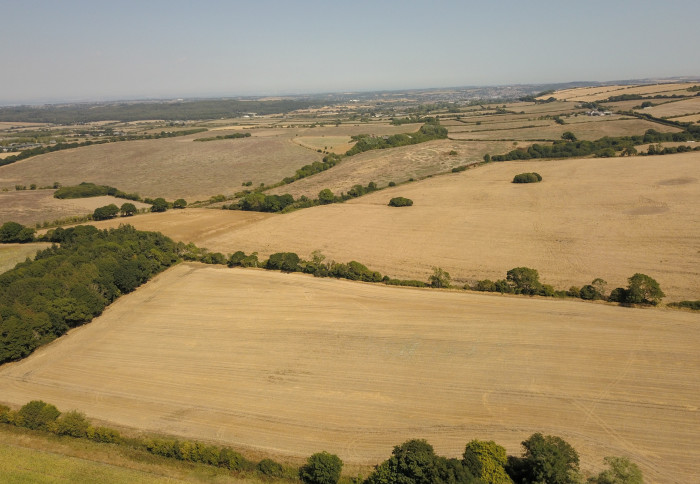Droughts in Northern Hemisphere made 20 times more likely by climate change

High temperatures that caused widespread drought across the Northern Hemisphere in summer 2022 were fuelled by climate change, finds a new analysis.
This summer was one of the hottest ever recorded in Europe. The extreme heat led to over 24,000 heat-related fatalities, and the worst fire season ever recorded. There was also exceptionally low rainfall, which led to very dry soils in France, Germany and other countries in Western and Central Europe.
Parts of China and North America also suffered intense heatwaves. China issued its first national drought alert and more than half of the United States was in drought.
The conditions caused widespread water shortages and severe crop failures, adding further pressure to food prices and food security globally.
The role of human-caused climate change
A new ‘rapid attribution’ analysis estimates that human-caused climate change made these drought conditions at least 20 times more likely. The study, which was carried out by 21 leading climate scientists from across the globe, was the latest published by World Weather Attribution (WWA) group.
“The 2022 Northern Hemisphere summer is a good example of how extreme events caused by climate change can unfold over large regions and longer periods of time,” said Dr Friederike (Fredi) Otto (pictured below), Senior Lecturer at the Grantham Institute - Climate Change and the Environment at Imperial and lead of the WWA.
 “It also shows how the combination of many different changes in the weather can damage our infrastructure and overburden our social systems. In Europe, drought conditions led to reduced harvests. This was particularly worrying, as it followed a climate change-fueled heatwave in South Asia that also destroyed crops, and happened at a time when global food prices were already extremely high due to the war in Ukraine.”
“It also shows how the combination of many different changes in the weather can damage our infrastructure and overburden our social systems. In Europe, drought conditions led to reduced harvests. This was particularly worrying, as it followed a climate change-fueled heatwave in South Asia that also destroyed crops, and happened at a time when global food prices were already extremely high due to the war in Ukraine.”
For the study, scientists analysed soil moisture levels in June, July and August 2022 across the whole of the Northern Hemisphere, excluding the tropics. They also focused on a specific region, Western and Central Europe, which experienced particularly severe drought with substantially reduced crop yields.
To quantify the effect of human-caused climate change on soil moisture, the researchers analysed weather data and computer simulations to compare the climate as it is today, after about 1.2°C of global warming since the late 1800s, with the climate of the past, following peer-reviewed methods.
An agricultural and ecological drought
The researchers analysed moisture levels both for the top 7cm of soil (surface level), and the top metre (root zone). The root zone is particularly important for crops as it is where plants extract water. Dryness in this region of the soil is often referred to as agricultural and ecological drought.
The study showed that, across the Northern Hemisphere, human-caused climate change made surface drought at least five times more likely, and agricultural and ecological drought at least 20 times more likely.
In the smaller Western and Central Europe region, human-induced global warming made surface drought about five to six times more likely, and agricultural and ecological drought about three to four times more likely.
This does not mean that climate change has had less influence on Europe than elsewhere in the Northern Hemisphere; the different sizes of the regions mean the results cannot be directly compared.
The scientists calculated that, in today’s climate, a drought like this can be expected around once every 20 years. If humans had not warmed the planet, the drought across the whole Northern Hemisphere would have been expected around once in 400 years or less; the European drought would have occurred around once in 60-80 years.
Estimating soil moisture
“We need to phase-out the burning of fossil fuels if we want to stabilise climate conditions and avoid a further worsening of these drought events." Professor Sonia Seneviratne
Increased temperatures were the main factor driving the drought, with changes to rainfall relatively less important. The study showed that climate change increased temperatures across the Northern Hemisphere to such an extent that a summer as hot as this year’s would have been virtually impossible without climate change.
However, the researchers note that quantifying the exact contribution of climate change to agricultural and ecological drought is challenging. Unlike temperature or rainfall, which can be directly measured, soil moisture has to be estimated, increasing the complexity of the analysis.
This complexity means the results have a wide possible range and the estimates of the influence of climate change in the study are conservative: the real influence of human activities is likely higher, the scientists say.
“We need to phase-out the burning of fossil fuels if we want to stabilise climate conditions and avoid a further worsening of these drought events, which will become more frequent and more intense with any additional increase of global warming,” said co-author Professor Sonia Seneviratne, from the Institute for Atmospheric and Climate Science at ETH Zurich.
To keep up to date with research activities at the Grantham Institute, receive invites to our events and find out about our latest publications, sign up to the Grantham Institute weekly update.
Article supporters
Article text (excluding photos or graphics) © Imperial College London.
Photos and graphics subject to third party copyright used with permission or © Imperial College London.
Reporter
Lottie Butler
The Grantham Institute for Climate Change